Quito, Mariscal Sucre International Airport (UIO/SEQU) Ecuador
| Mariscal Sucre International Airport Aeropuerto Internacional Mariscal Sucre | ||||
|---|---|---|---|---|
 |
||||
| IATA: UIO – ICAO: SEQU | ||||
| Summary | ||||
| Airport type | Public / Military | |||
| Operator | Quipor | |||
| Serves | Quito, Ecuador
|
|||
| Elevation AMSL | 9,228 ft / 2,813 m | |||
| Coordinates | ||||
| Website | ||||
| Runways | ||||
| Direction | Length | Surface | ||
| m | ft | |||
| 17/35 | 3,120 | 10,236 | Asphalt | |
| Source: | ||||
| Quito | |||
|---|---|---|---|
| Year | Sony | Spot location | |
| Digital | |||
| 01/09/2010 |  |
Inside the terminal |
|
| with courtesy of differents auditors | |||
|---|---|---|---|
Mariscal Sucre International Airport (Spanish: Aeropuerto Internacional Mariscal Sucre) (IATA: UIO, ICAO: SEQU) is the international airport serving Quito, the capital city of Ecuador. It is named after Venezuelan born Antonio José de Sucre, known as the "Gran Mariscal de Ayacucho", a hero of Ecuadorian and Latin American independence. It began operations in 1960, and currently handles about 3.9 million passengers and 125,000 metric tons of freight per year. The airport, one of the highest in the world (at 2800 meters AMSL) is located in the northern part of the city, in the Chaupicruz parish, within 5 minutes of Quito's financial center; the terminals are located at the intersection of Amazonas and La Prensa avenues.
Due to its location (in the middle of a city surrounded by mountains), the current airport cannot be expanded to accommodate any larger aircraft or an increase in air traffic. Its operation poses higher risks, too; six serious accidents and several incidents have taken place in recent years. A new airport is being built in the Tababela parish, about 18 km to the east of the city. This is being constructed by a private consortium (including Aecon) and is slated to begin operations in November 2011.
The airport charges an international departure tax of US $40.80 as of March 1, 2009, this fee is no longer paid at the airport, it is now included in all international airfares since February 2011.
Accidents and incidents
- September 30, 2010: Troops from the Ecuadorian airforce took control of Mariscal Sucre International Airport in protest of Ecuadorian president, Rafael Correa.
- October 27, 2009: An Ecuadorian Air Force HAL Dhruv helicopter crashed during display maneuvers at Mariscal Sucre International Airport, with both pilots sustaining only minor scratches and no casualties. The aircraft was flying in military formation next to two other helicopters at the time of the incident.
- March 19, 2009: An Ecuadorian Air Force Beechcraft B200 King Air struck a building in the Guápulo district of Quito while on approach to Mariscal Sucre International Airport in heavy fog. All five occupants of the aircraft were killed, as well as two people on the ground.
- September 23, 2008: An Icaro Air Fokker F28 Mk4000 skidded off of the runway. There were no injuries among the 62 passengers, but the aircraft was written off.
- November 9, 2007: An Iberia Airlines Airbus A340-600 (Iberia 6463 Flight) was badly damaged after sliding off the runway. The landing gear collapsed and two engines were dislodged. All 333 passengers and crew were evacuated via inflatable slides, but no serious injuries were reported.
- January 17, 2003: A TAME Fokker F28 Mk4000 ran off the runway after takeoff was abandoned due to a tire blowout. The nose gear collapsed, and the aircraft came to rest 81 meters past the runway threshold. There were no injuries.
- August 29, 1998: A Cubana de Aviación Tupolev Tu-154M overshot the runway killing the 14-member crew, 56 of the 77 passengers and 10 people on the ground.
- May 1, 1996: A Fly Linhas Aéreas Boeing 727-200 aborted takeoff in rainy weather, but overshot the runway, crossing a road that lay at the end of runway 35. The aircraft had been overloaded. No injuries were reported.
- May 3, 1995: A Gulfstream II operated by American Jet selected the wrong VOR frequency during a nighttime approach to Quito; the jet flew 12 miles further south than it should have, striking the Sincholagua volcano at 16,000 feet. All seven occupants were killed.
- December 10, 1992: A North American Sabreliner 60 operated by the Ecuadorian Air Force clipped a 10-story building under construction 3 kilometers south of the airport. The aircraft crashed into a residential area, killing all 10 on board and 3 more on the ground.
- June 3, 1988: A North American Sabreliner 40 operated by the Ecuadorian Air Force flew into a mountain on the outskirts of Quito, killing all 11 on board.
- September 18, 1984: An AECA (Aeroservicios Ecuatorianos) Douglas DC-8-50 freighter failed to achieve altitude during takeoff, running off the end of the runway and crashing into a residential area 460 meters past the runway, destroying 25 houses, killing all 4 crewmembers as well as 49 people on the ground.
- April 29, 1982: A Lockheed C-130 Hercules operated by the Ecuadorian Air Force crashed into a mountain near Quito while executing a missed approach; 7 were killed.
- January 27, 1980: An Avianca Boeing 720 landed too fast, too far down the runway, and consequently overran, collapsing the nosegear. No injuries were reported.
- November 7, 1960: An AREA Ecuador Fairchild F-27 crashed into a mountain 16 kilometers south of Quito during its approach. 37 occupants were killed.


/https%3A%2F%2Fprofilepics.canalblog.com%2Fprofilepics%2F8%2F1%2F81057.jpg)
/https%3A%2F%2Fstorage.canalblog.com%2F20%2F39%2F97146%2F32300127_o.jpg)
/https%3A%2F%2Fstorage.canalblog.com%2F12%2F78%2F97146%2F30672854_o.jpg)
/https%3A%2F%2Fstorage.canalblog.com%2F26%2F90%2F97146%2F27985019_o.jpg)
/https%3A%2F%2Fstorage.canalblog.com%2F37%2F46%2F97146%2F27230276_o.jpg)
/https%3A%2F%2Fstorage.canalblog.com%2F33%2F59%2F97146%2F21981067_o.jpg)
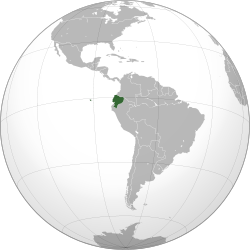

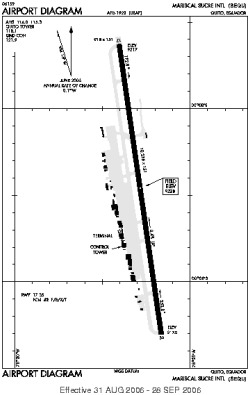



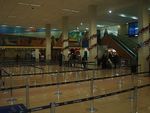

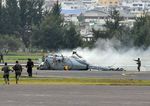

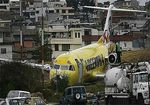
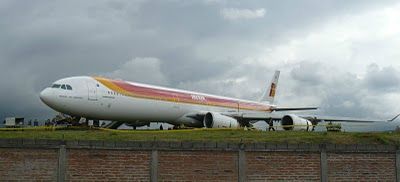


/http%3A%2F%2Fstorage.canalblog.com%2F88%2F38%2F97146%2F61141418_o.jpg)
/http%3A%2F%2Fupload.wikimedia.org%2Fwikipedia%2Fen%2Fthumb%2Fa%2Fac%2FTransbrasilnewlogo.jpg%2F250px-Transbrasilnewlogo.jpg)
/http%3A%2F%2Fstorage.canalblog.com%2F52%2F76%2F97146%2F47055481_o.jpg)
/http%3A%2F%2Fupload.wikimedia.org%2Fwikipedia%2Fen%2Fthumb%2F5%2F52%2FLAN_Airlines_logo.svg%2F200px-LAN_Airlines_logo.svg.png)